K11 urban farming. Gardens in shopping centers
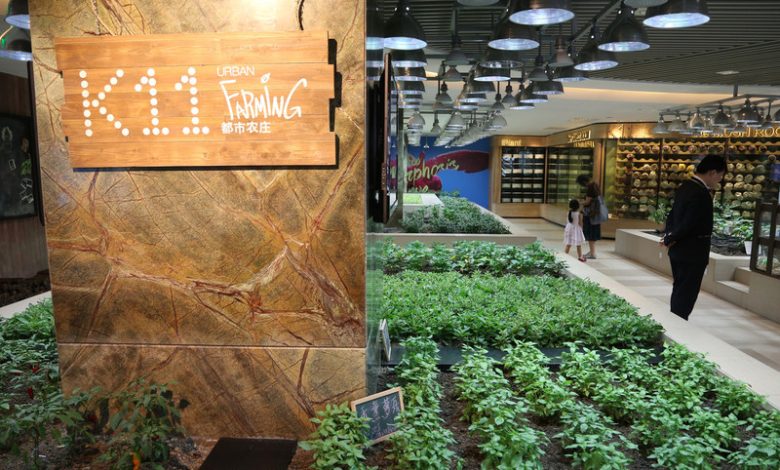
Very good to all Agrohuerters! During our trip to Shanghai, we have been able to see several very curious Skyfarms. But we have also visited orchards in unusual places such as K11 urban farming, an orchard inside a shopping center.
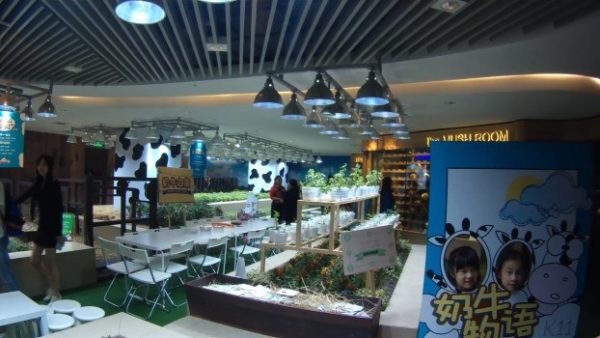
What is the K11?
The K11 is a 61-storey skyscraper that has been present on the Shanghai skyline since 2002. Its 278 meters in height, including its final antenna, place it in seventh position among the tallest buildings in the city, which is no small feat. turkey considering that the second tallest building in the world is located here. Among its most notable services we find an exhibition center, hotels, offices and one of the most famous shopping centers in the city.
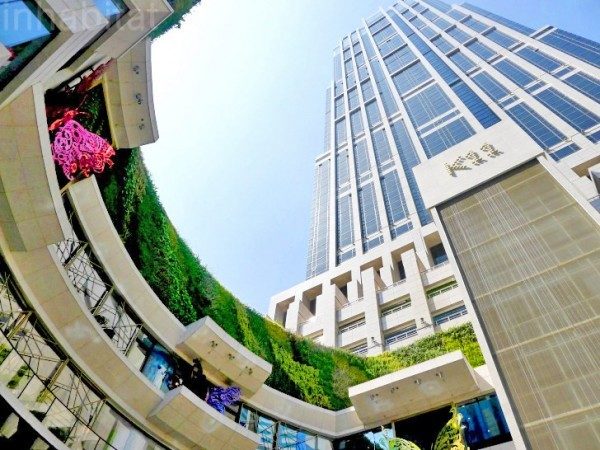
K11 urban farming. A didactic and lucrative claim
The K11 urban farming is one of the main attractions of this shopping center since its creation in May 2013. It is located on the third floor, a special floor dedicated to agriculture and livestock where you can find different restaurants and organic products.. Planting workshops are also held a couple of times a month. I am going to describe a little how our experience was:
As we got out of the elevator, the first thing we found was two calves in a pen, something shocking especially in a shopping center… Later we observed that there was also an older Friesian cow, stabled in a relatively small space for its size… These animals, within the K11 urban farming, are the subject of thousands of photos a day, receive practically no natural light and live among the voices and hustle and bustle of the shopping center. Something that seems pretty bad to me, a shopping center is no place for a cow.
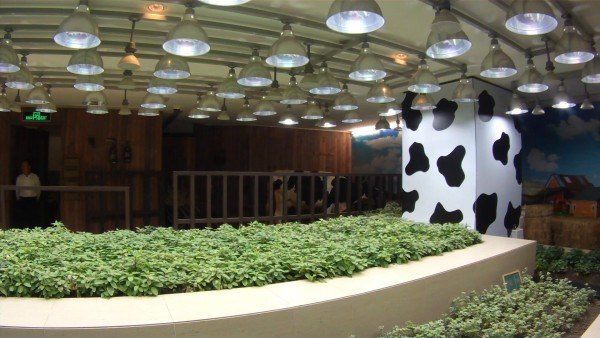
Around these animals we find workers dressed as cows who put on a dance show for the children every 20 minutes or so. And all this paraphernalia is nothing more than a claim to sell milk shakes in a stall smaller than the calf pen…
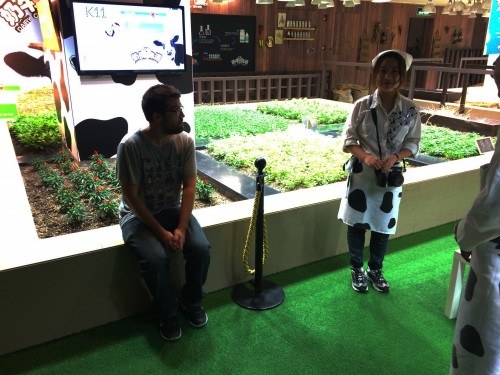
To take away the positive point, I suppose that many of these children, residents of a city of more than 20 million inhabitants, have never seen a cow in their life and can learn where the milk they consume comes from and touch the animals…
The urban garden of K11 urban farming
Integrated between these cows we find the urban garden of the K11 urban farming, I am going to divide it into 3 zones to tell you a little better what we found:
Zone A. Zone of terraces
In this first zone of K11 urban farming, 6 raised beds made of plastic and insulating materials are cultivated. Most of these terraces are about 2 square meters in area and 1.5 meters high, others are somewhat longer, about four meters long. In these terraces we can find peppers, lettuce and different low-sized aromatics such as basil etc…
According to what they told me, the LED light bulbs that are on these terraces are enough for the growth of the plants and they are watered in the evening, when the public leaves, through sprinklers integrated next to the lights. For me, the plants were a bit small although the planting frame was correct, which caused a lack of attention.
Zone B. Workshop area
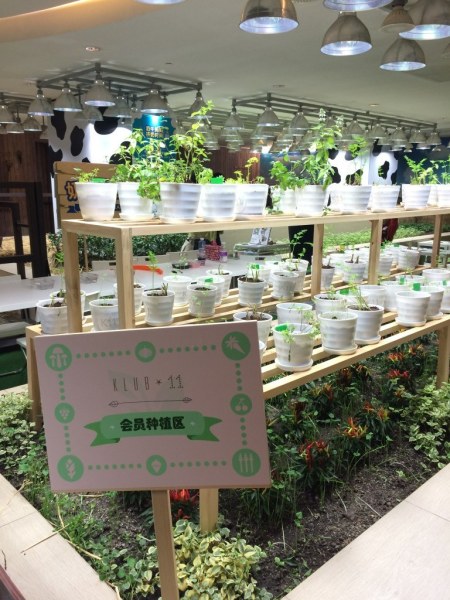
This zone is the transit space itself, where those interested in K11 urban farming can browse observing both zone A and zone C. At the back of it, a space is reserved for children to paint or make figures with plasticine.. It was not very clear to me if the monitors of that space were part of the vaca family or not… From what I have read, planting workshops are held in this area a couple of times a month… These workshops are free for the center’s clients commercial, as long as they present purchase receipts worth 1000 RMB, about €150…
In this area of K11 urban farming we also find vegetables, in this case mainly potted crops. Turnips or carrots are grown in these pots, but we also find a couple of terraces with peppers. The potted species were growing, although a little wild, giving the impression that they were the product of some workshop or event that had already passed and the pots had been forgotten.
Zone C. Plant wall crops
Finally, we find this area, from the K11 urban farming, with large windows and behind them various types of crops: Mushrooms and green shoots.
Mushrooms: As Lucía told you in her article on exploitation in qixin, spores are inoculated in bags of substrate to achieve this result:
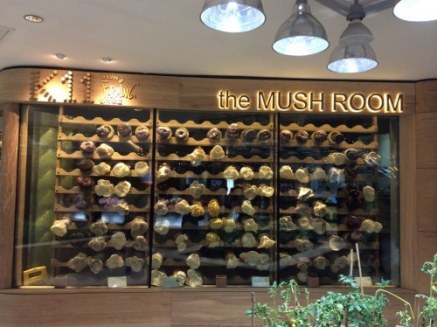
Green shoots: Many of you know that depurative green smoothies are in fashion. These green shoots are mainly grass stems, I personally wouldn’t drink it though I have to do more research on them.
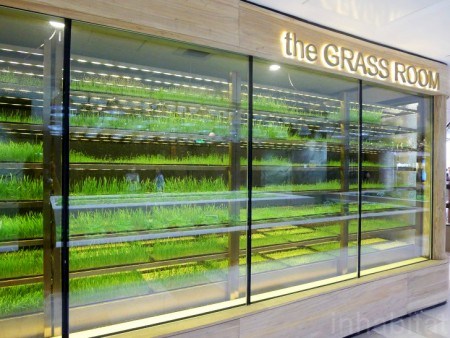
My surprise was enormous when the manager of the restaurant next door told me that those crops, within the K11 urban farming, were his and that all the other terraces in zone A were just a lure for them to go eat at his restaurant…
All the aromatics, peppers and other crops of the K11 urban farming, were worth nothing more than attracting the customer to the plate of mushrooms or the depurative green juice. Workshops were not held on those terraces… Something respectable but not very efficient in my opinion, I think that showing the crops from the window was more than enough to attract customers…
As positive things, we can say that the K11 urban farming is a curious place where the little urbanites can see the plants grow, touch them, smell them and know where things come from for themselves, but it does not seem right to me to use urban agriculture and ecological as a claim.
All the best !

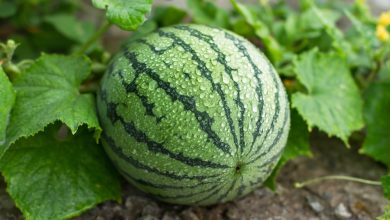
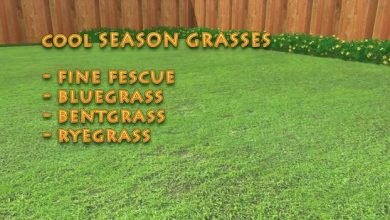
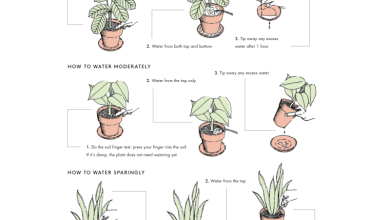
![Photo of Fertilize Strawberries: How to do it? Because is good? [Homemade Compost]](https://www.complete-gardening.com/wp-content/uploads/2021/06/sembrar-fresas-5-1-390x220.jpg)